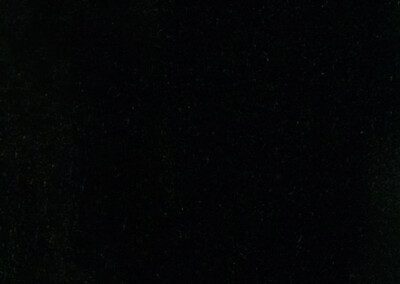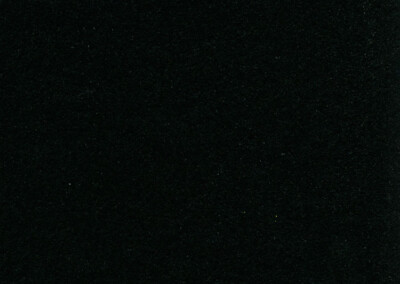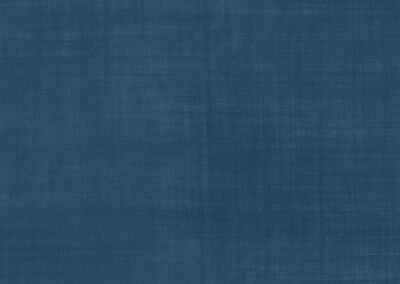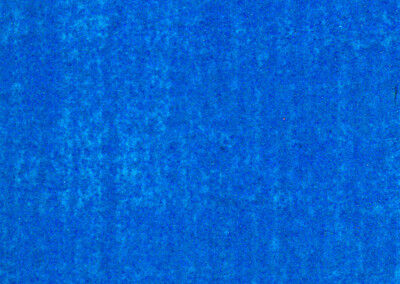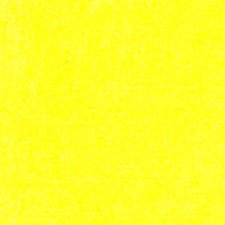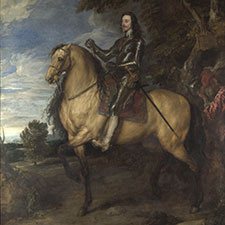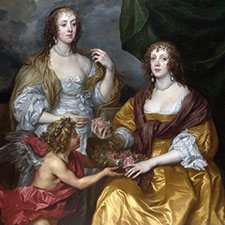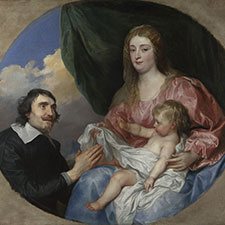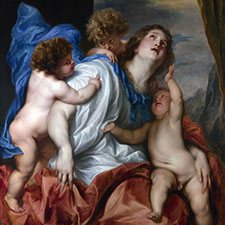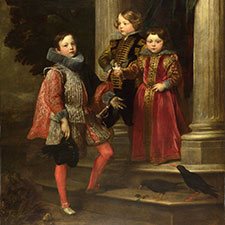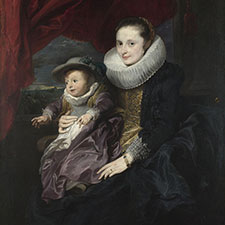Anthony van Dyck, Equestrian Portrait of Charles I
ca 1637-38Paintings sorted by Historical period | Painter | Subject matter | Pigments used
Overview
Medium: Oil
Support: Canvas
Size: 367 x 292.1 cm
Art period: Baroque
National Gallery London
NG1172
The famous equestrian portrait of very large dimensions and with an exciting and rich history. The depiction of the King conveys an image of power and dignity.
The pigment analysis shows how Van Dyck achieved subdued tonality and subtle colours. The dark and flat tones are partly due to the degradation of the pigments, notably smalt and the red and yellow lakes.
Pigments
Pigment Analysis
This pigment analysis is based on the work of the scientists at the National Gallery London (1). The scientists employed x-ray radiography (XRR), energy dispersive x-ray spectroscopy (EDX) and x-ray diffraction (XRD) to gain insights into the inner layers of the painting and to identify the pigments.

1 Blue sky: smalt mixed with white with a discontinuous layer of natural ultramarine and white painted on top in the bluest areas.
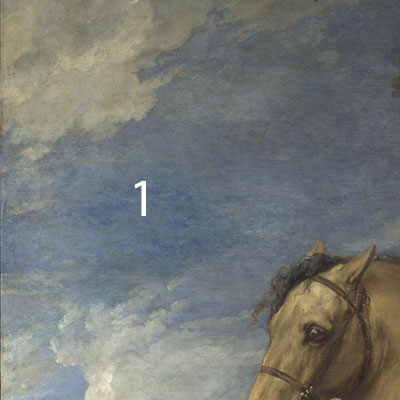
2 The greyish-blue rim of the saddle cloth: badly faded indigo mixed with white.
3 Brownish-red areas of the saddle cloth: red lake mixed with vermilion.
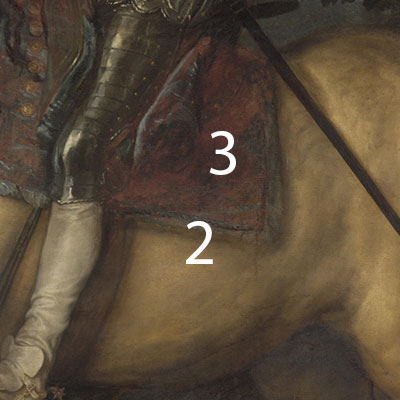
4 Equerry’s red sleeve: red lake mixed with vermilion over a layer of red ochre, black and white.
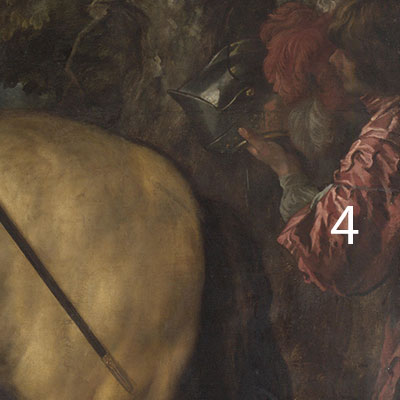
5 Golden stirrups: lead-tin yellow.
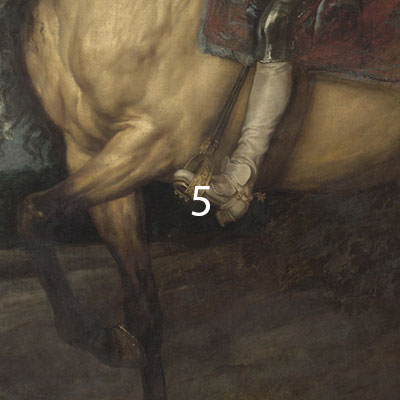
6 Dark foreground, foliage, and middle distance landscape: a mixture of various ochres, Vandyke brown and black, with a yellow lake.
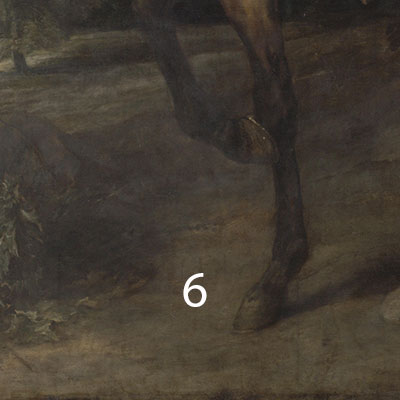
7 Stronger greens: a mixture of azurite, yellow ochre, a black and yellow lake in varying proportions.
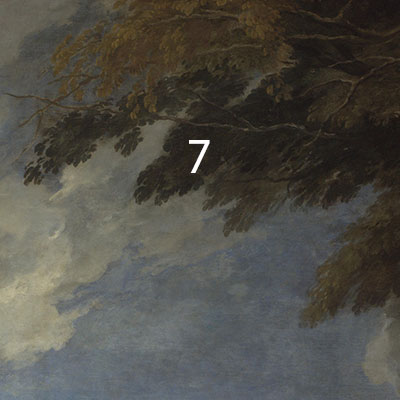
References
(1) Ashok Roy, The National Gallery’s Van Dycks: Technique and Development, National Gallery Technical Bulletin, Volume 20, 1999, pp. 77-79. Available as pdf.
Pigments Used in This Painting
Resources
See the collection of online and offline resources such as books, articles, videos, and websites on Anthony van Dyck in the section ‘Resources on Painters‘
Videos
Video: 'Van Dyck, Equestrian Portrait of Charles I: Cleaning of the Painting' by National Gallery
Video: 'Van Dyck, Equestrian Portrait of Charles I: Relining of the Painting' by National Gallery
Video: 'Van Dyck, Equestrian Portrait of Charles I: Retouching of the Painting' by National Gallery
Video: 'Van Dyck: The Man, the Artist and his Influence' by National Portrait Gallery
Video: 'Anthony van Dyck: A collection of 449 paintings (HD)' by LearnFromMasters
Publications and Websites
Publications
(1) Ashok Roy, The National Gallery’s Van Dycks: Technique and Development, National Gallery Technical Bulletin, Volume 20, 1999, pp. 77-79. Available as pdf.
(2) Margaret L Goldsmith, The wandering portrait. The history of Van Dyck’s portrait of Charles I on horseback, Weidenfeld & Nicolson, London, 1954.
(3) Gustav Gluck, “Van Dyck’s Equestrian Portraits of Charles I,” Burlington Magazine (May 1937): 212.
(4) Roy Strong, Van Dyck: Charles I on Horseback (London: Penguin Press, 1972) 14.
(5) Alena Buis, Anthony van Dyck’s Equestrian Portraits of Charles I, The Concordia Undergraduate Journal of Art History, Vol 1, no date.
(6) Liedtke, Walter A, “Anthony van Dyck“: The Metropolitan Museum of Art Bulletin, v. 42, no. 3 (Winter, 1984–1985). Available as pdf.



